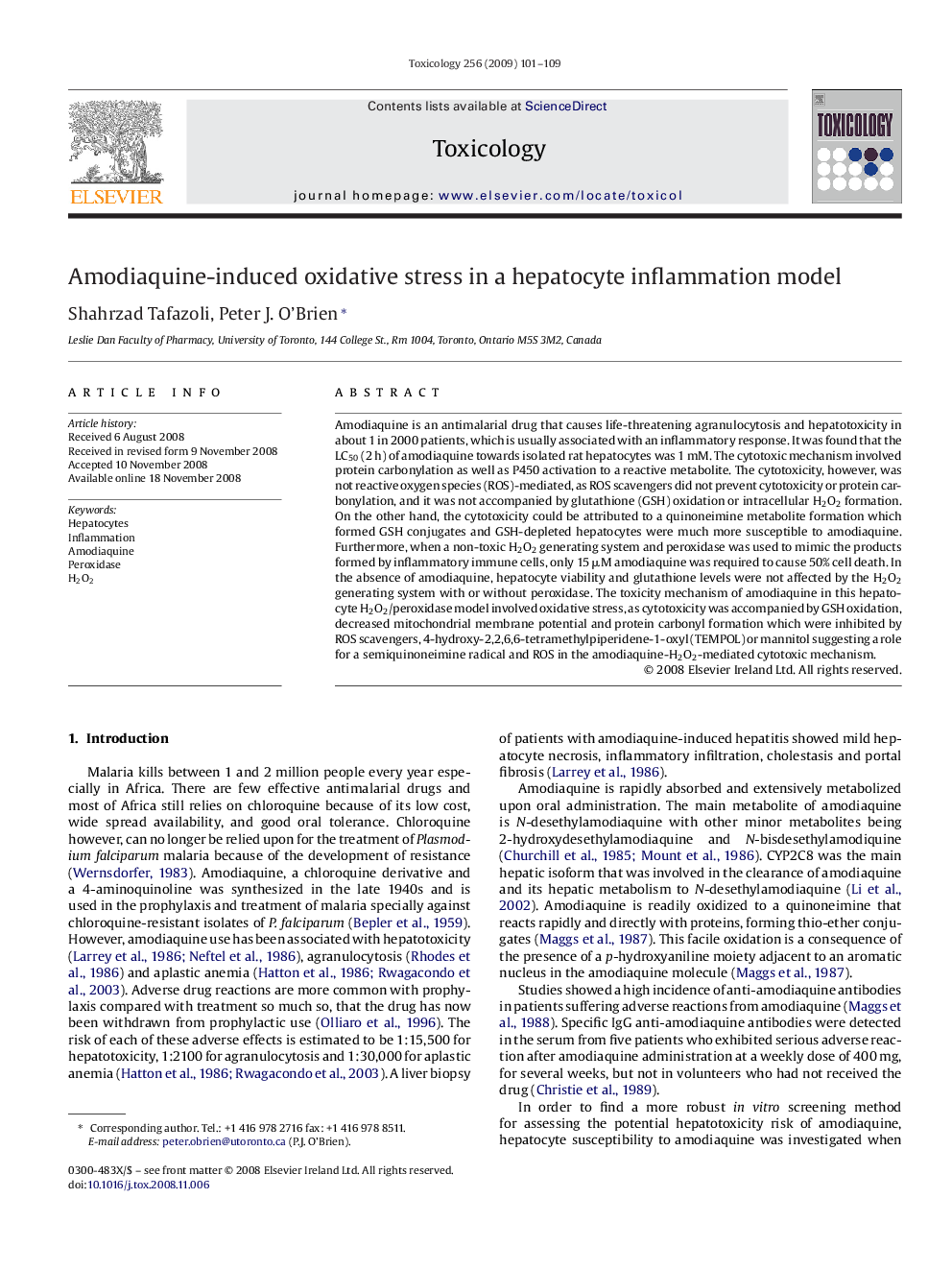| کد مقاله | کد نشریه | سال انتشار | مقاله انگلیسی | نسخه تمام متن |
|---|---|---|---|---|
| 2596743 | 1562399 | 2009 | 9 صفحه PDF | دانلود رایگان |

Amodiaquine is an antimalarial drug that causes life-threatening agranulocytosis and hepatotoxicity in about 1 in 2000 patients, which is usually associated with an inflammatory response. It was found that the LC50 (2 h) of amodiaquine towards isolated rat hepatocytes was 1 mM. The cytotoxic mechanism involved protein carbonylation as well as P450 activation to a reactive metabolite. The cytotoxicity, however, was not reactive oxygen species (ROS)-mediated, as ROS scavengers did not prevent cytotoxicity or protein carbonylation, and it was not accompanied by glutathione (GSH) oxidation or intracellular H2O2 formation. On the other hand, the cytotoxicity could be attributed to a quinoneimine metabolite formation which formed GSH conjugates and GSH-depleted hepatocytes were much more susceptible to amodiaquine. Furthermore, when a non-toxic H2O2 generating system and peroxidase was used to mimic the products formed by inflammatory immune cells, only 15 μM amodiaquine was required to cause 50% cell death. In the absence of amodiaquine, hepatocyte viability and glutathione levels were not affected by the H2O2 generating system with or without peroxidase. The toxicity mechanism of amodiaquine in this hepatocyte H2O2/peroxidase model involved oxidative stress, as cytotoxicity was accompanied by GSH oxidation, decreased mitochondrial membrane potential and protein carbonyl formation which were inhibited by ROS scavengers, 4-hydroxy-2,2,6,6-tetramethylpiperidene-1-oxyl (TEMPOL) or mannitol suggesting a role for a semiquinoneimine radical and ROS in the amodiaquine-H2O2-mediated cytotoxic mechanism.
Journal: Toxicology - Volume 256, Issues 1–2, 4 February 2009, Pages 101–109